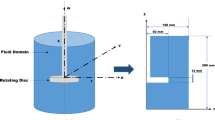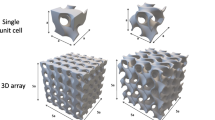Abstract
This study performed computational fluid dynamics (CFD) simulation to investigate the flow patterns of molten pool during welding with a transient heat transfer. The influence of gravity changed the flow patterns of the molten pool, which determined the molten pool length and cooling time from 800℃ to 500℃(t8/5) under the same heat input. In the flat position, the upward flow caused by arc forces and the inward flow generated by Marangoni convection resulted in a conflict between flows, and a molten pool length of 12.1 mm. In the overhead position, the volume of the molten pool was continuously drawn by gravity, eliminating the conflict between the inward and the upward flow. Therefore, convective heat transfer accelerated toward the edge of the molten pool, leading to an increased molten pool length (15 mm). In the vertical downward position, gravity pushed the molten pool toward the welding direction. The resultant flow pattern resulted in a rapid cooling rate and reduced the upward flow of the molten pool, leading to a short molten pool length (8.8 mm). The t8/5 obtained from the CFD were coupled with thermodynamic simulations to predict the microstructures of the coarse-grain heat-affected zone.
















Similar content being viewed by others
Data availability statement
All data we used are public data for academic research.
References
Zhang J, Xin W, Luo G, Wang R, Meng Q, Xian S (2020) Effect of welding heat input on microstructural evolution, precipitation behavior and resultant properties of the simulated CGHAZ in high-N V- alloyed steel. Mater Charact 162:110201
Muthupandi V, Bala Srinivasan P, Seshadri b, Sundaresan S (2003) Effect of weld metal chemistry and heat input on the structure and properties of duplex stainless steel welds. Mater Sci Eng A 358:9–16
Dornelas PHG, Farias FWC, Oliveira VHPM, Moraes DO, P.Z. Júnior, João da Cruz Payão Filho. Influence of welding interpass temperature on Charpy V-notch impact energy of coarse-grain heat-affected zone of AISI 4130 steel pipe. Int J Adv Manuf Technol 108:2197–2211
Saunders N, Guo UKZ, Li X, Miodownik AP, Schillé J-P (2003) Using JMatPro to model materials properties and behavior. JOM 55(12):60–65
Grajcar A, Zalecki W, Skrzypczyk P, Kilarski A, Kowalski A, Kołodziej S (2014) Dilatometric study of phase transformations in advanced high-strength bainitic steel. J Therm Anal Calorim 118(2):739–748
Park JY, Lee SB, Kang SG, Jeon JG, Seong HSL, Kim HK, Choi HJ (2015) Complex effects of alloy composition and porosity on the phase transformations and mechanical properties of powder metallurgy steels. Powder Technol 284:459–66
Javaheri V, Nyyssonen T, Grande B, Porter D (2018) Computational design of a novel medium-carbon, low-alloy steel microalloyed with niobium. J Mater Eng Perform 27(6):2978–2992
Babu K, Prasanna Kumar T.S (2014) Comparison of austenite decomposition models during finite element simulation of water quenching and air cooling of AISI 4140 steel. Metall Mater Trans B 45(4):1530–44
Mandziej ST (2010) Physical simulation of metallurgical process. Mater Tehnol 44(3):105–119
Rosenthal D (1941) Mathematical theory of heat distribution during welding and cutting. Weld J 20:220–234
Goldak J, Bibby M, Moore J, House R, Patel B (1986) Computer modeling of heat flow in welds. Metall Trans B 17(3):587–600
Hekmatjou H, Zeng Z, Shen J, Oliveira JP, Naffakh Moosavy H (2020) A comparative study of analytical Rosenthal, finite element, and experimental approaches in laser welding of AA5456 alloy. Metals 10:436–60
Shen N, Samanta A, Cai WW, Rinker T, Carlson B, Ding H (2021) 3D finite element model of dynamic material behaviors for multilayer ultrasonic metal welding. J Manuf Process 62:302–312
Fischer CR, Bechetti DH, Sinfield MF (2021) Comparison of analytical, empirical, and finite-element modeling of weld metal cooling as function of plate orientation, thickness, and heat input. J Manuf Process 62:471–482
Dornelas PHG, da C. Payão Filho J, Farias FWC, Moraese Oliveira VHP, de O. Moraes D, Zumpano Júnior P (2020) FEM-thermodynamic simulation methodology to predict the influence of t8/5 on the coarse grain heat affected zone of a Cr-Mo low-alloy steel pipe. J Manuf Process 60:520–29
Toyoda M, Mochizuki M (2004) Control of mechanical properties in structural steel welds by numerical simulation of coupling among temperature, microstructure, and macro-mechanics. Sci Technol Adv Mater 5(1–2):255–266
Chen X, Chen X, Xu H, Madigan B (2015) Monte Carlo simulation and experimental measurements of grain growth in the heat affected zone of 304 stainless steel during multipass welding. Int J Adv Manuf Technol 80(5–8):1197–1211
Li W, Yu R, Huang D, Wu J, Wang Y, Hu T, Wang J (2019) Numerical simulation of multilayer rotating arc narrow gap MAG welding for medium steel plate. J Manuf Process 45:460–471
Novotný L, de Abreu HFG, de Miranda HC, Béreš M (2016) Simulations in multipass welds using low transformation temperature filler material. Sci Technol Weld Join 21(8):680–7
Huang Z, Tang H, Ding Y, Wei Q, Xia G (2019) Numerical Simulations of temperature for the in-service welding of gas pipeline. J Mater Process Technol 248:72–78
Zubairuddin M, Albert SK, Vasudevan M, Mahadevan S, Chaudhari VVK (2017) Numerical simulation of multi-pass GTA welding of grade 91 steel. J Manuf Process 27:87–97
Park JH, Cho DW, Moon HS (2022) CFD simulation of molten pool dynamic behavior on vertical-downward position in P-GMAW process. Int Commun Heat Mass Tranf 132:105876
Cho MH, Lim YC, Farson DF (2006) Simulation of weld pool dynamics in the stationary pulsed gas metal arc welding process and final weld shape. Weld J 85(12):271
Cho WI, Na SJ, Cho MH, Lee JS (2010) Numerical study of alloying element distribution in CO2 laser-GMA hybrid welding. Comput Mater Sci 49:792–800
Cho DW, Park JH, Moon HS (2019) A study on molten pool behavior in the one pulse one drop GMAW process using computational fluid dynamics. J Heat Mass Transf 139:848–859
Fattahi M, Nabhani N, Hosseini M, Arabian N, Rahimi E (2013) Effect of Ti-containing inclusions on the nucleation of acicular ferrite and mechanical properties of multipass weld metals. Micron 45:107–114
Yakubtsov IA, Poruks P, Boyd JD (2008) Microstructure and mechanical properties of bainitic low carbon high strength plate steels. Mater Sci Eng A 480:109–116
Funding
This research was carried out with the support of the Korea Institute of Industrial Technology as "Development of core technologies of AI based self-power generation and charging for next-generation mobility (KITECH EH-23–0013)". This research was carried out with the support of the Ministry of Oceans and Fisheries as “Development of liquid hydrogen-based leisure fishing boats (20220037, PNK23600)”.
Author information
Authors and Affiliations
Contributions
Jin-Hyeong Park: Methodology, Conceptualization, Data curation, Writing- Original draft preparation, Writing—Review and editing. Du-Song Kim: Investigation. Dae-Won Cho: Visualization, Software. Jaewoong Kim: Formal analysis. Changmin Pyo: Validation.
Corresponding authors
Ethics declarations
Competing interests
The authors declare no conflict of interest.
Additional information
Publisher's Note
Springer Nature remains neutral with regard to jurisdictional claims in published maps and institutional affiliations.
Rights and permissions
Springer Nature or its licensor (e.g. a society or other partner) holds exclusive rights to this article under a publishing agreement with the author(s) or other rightsholder(s); author self-archiving of the accepted manuscript version of this article is solely governed by the terms of such publishing agreement and applicable law.
About this article
Cite this article
Park, JH., Kim, DS., Cho, DW. et al. Influence of thermal flow and predicting phase transformation on various welding positions. Heat Mass Transfer 60, 195–207 (2024). https://doi.org/10.1007/s00231-023-03429-w
Received:
Accepted:
Published:
Issue Date:
DOI: https://doi.org/10.1007/s00231-023-03429-w




